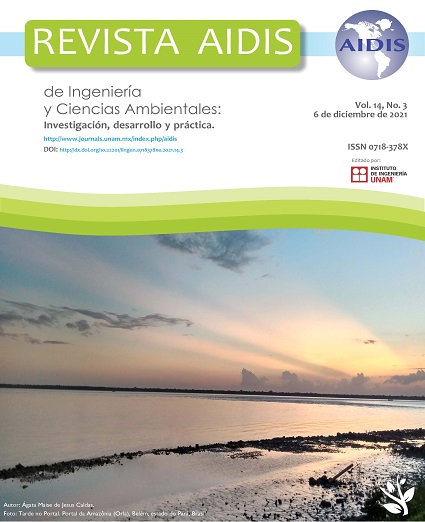MODELING OF THE LIMIT VALUE FOR REMOVING PARAMETERS BY CONSTRUCTED WETLANDS
Contenido principal del artículo
Resumen
This paper refers to the study of the efficiency of the constructed wetlands in the wastewater treatment, via mathematical modeling. The propose is to determine the stabilization limit value of removal of some parameters: Chemical Oxygen Demand (COD), Ammoniacal Nitrogen and Conductivity. The research considered a constructed wetland system, in an experimental scale, with different hydraulic retention time (HRT) for domestic wastewater treatment: 0, 2, 4, 6 and 8 days. The data were collected, analyzed and the results indicated, according to the Ford-Walford method, the removal stabilization limit values were, approximately, 90% for COD, 74% for Ammoniacal Nitrogen and 41% for Conductivity. According to the model, the hydraulic retention time to reach these removal indexes were 4 days for Ammoniacal Nitrogen and Conductivity and 10 days for COD. The evaluated parameters have demonstrated to be sensitive to the biological wastewater treatments by constructed wetland, the model made it possible to determine the limit values and the stabilization time and the hydraulic retention time has showed an important factor of the management of such systems, that must be monitored, in order to optimize the parameters removal and the efficiency of the treatment.


